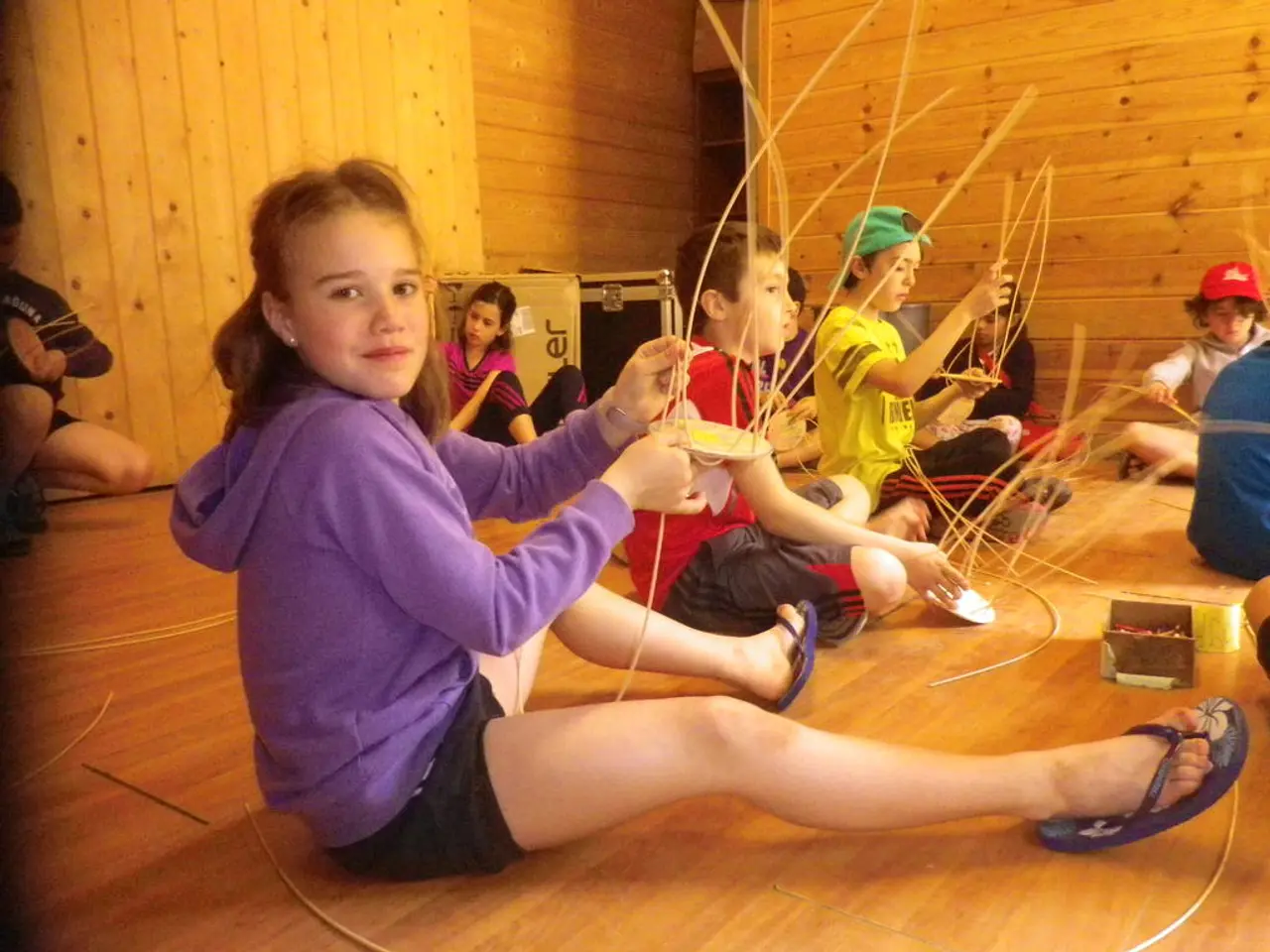Modern Concepts for Kid-friendly and Practical Bedroom Layouts
In the realm of children's room design, the key to success lies in striking a harmonious balance between fun, functionality, and growth. By focusing on creating a flexible, safe, and engaging space tailored to your child's needs and evolving interests, you can ensure a room that will stand the test of time.
Starting with your child's unique personality and habits is the first step in the design process. Design for their temperament and daily routines, providing spaces that support their activity level and emotional comfort. For instance, play zones for active kids and quiet reading nooks for calm kids are both essential elements in creating a well-rounded space.
Choosing smart, flexible furniture is another crucial strategy. Opt for modular, space-saving pieces like extendable beds, loft beds with desks underneath, foldable furniture, or beds with built-in storage drawers to maximize space and adapt as your child grows.
Incorporating storage thoughtfully is essential for maintaining a clutter-free environment. Integrated storage in beds or closets helps keep the room organized, reduces clutter, and teaches children responsibility. Ensure furniture is durable, easy to clean, and includes smooth edges for safety.
Creating zones for different activities, such as studying, playing, relaxing, and hobbies, is vital for balancing functionality and fun. For example, a desk area, an open floor for play, and a cozy corner to unwind or read helps cater to a child's various needs.
Using calming, child-friendly colours balanced with playful accents can ground the space while allowing visually interesting, fun touches that can be easily updated as tastes evolve. The 60-30-10 colour rule, a popular design principle, can be applied to achieve this balance.
Safety and durability should never be overlooked. Choose natural fabrics to avoid allergies, sturdy furniture with safe finishes, and avoid synthetic irritants. Ensure furniture stability and smooth corners to prevent injuries.
By harmonizing these elements—tailored, flexible furniture and layout, purposeful storage, calming yet playful aesthetics, and safety considerations—the room can support your child’s growth, creativity, comfort, and wellbeing over time.
Smart choices in layout, furniture, and storage help create a flexible room that remains organized and welcoming. Personal touches and creative decor spark imagination and make the child feel at home. A well-designed kids' room finds a balance between fun elements and everyday practicality.
Open shelving or cube storage makes it easy for kids to access and put away toys themselves, fostering a sense of independence. Safety is the foundation of a good kids' room design, with considerations for furniture with rounded corners, non-toxic paints, and childproof electrical outlets.
Dedicating a section of the kids' bedroom to a play space can encourage creativity and keep toys organized. Including seating, like beanbags or child-sized chairs, in play zones gives kids a place to unwind and read.
Lastly, a dedicated reading nook encourages quiet play and supports a child's learning. Smart Storage Solutions, such as plastic bins and woven baskets, offer great flexibility for storing toys, books, and laundry. By following these key strategies, you can create a perfect haven for your child, balancing fun, functionality, and growth.
- To personalize the room further and make it more engaging, consider incorporating drawing, art, or even pets-themed decorations based on your child's interests.
- If your child is fascinated by fashion-and-beauty, setting up a small vanity or wardrobe area could inspire their creativity and self-expression.
- For a child who enjoys food-and-drink, a mini kitchenette or snack area can be an exciting addition to their room, fostering independent learning in meal preparation.
- To cater to a wide range of interests and hobbies, consider adding tutorials or instructional materials related to art, design, cars, travel, or shopping to encourage learning and exploration.
- Home-and-garden themed decor, such as realistic miniature plants or terrariums, can bring a touch of nature indoors and provide a calming influence in the room.
- A well-designed kids' room can also double as a relaxing retreat for parents by offering comforting elements like cozy blankets, comfortable seating, and soothing colors.
- Good relationships with friends and family can be fostered by incorporating a space for remote learning or video calls, promoting communication and bonding.
- If travel is a significant part of your lifestyle, incorporating elements from past journeys or cultures can make the room a unique, globally-inspired space for your child to learn and grow.




